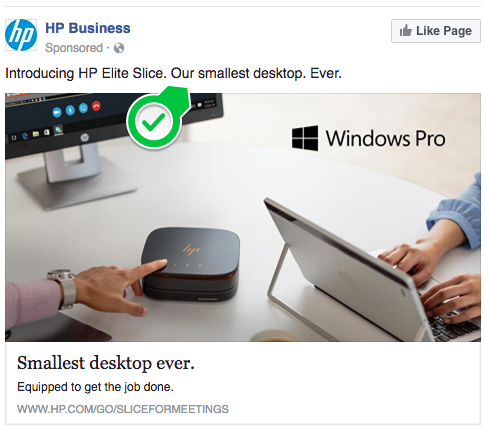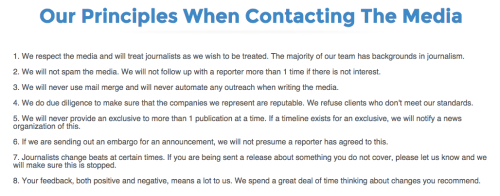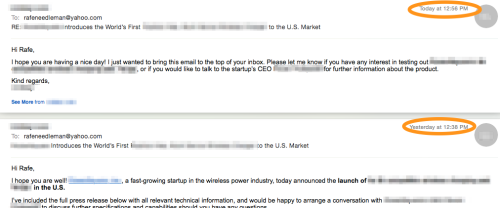I get about one of these a week:
From: UltraCorp
Subject: A Followup from UltraCorpDear Rafe,
This is Suzie from UltraCorp.
I’ve noticed that you haven’t been using UltraApp lately. We would really like to make UltraApp more useful for you, and it would help a great deal if you could tell us what went wrong. [Etc., with more whining. Also, I changed the names.]
The problem with this email, other than the fact that it’s sad and desperate, is this: I don’t know what went wrong, because I forgot what the product is and what it does. You’re assuming that I know something I don’t. And you just lost an opportunity to re-sell me on it.
Now, I’m sure there was a good reason I downloaded or signed up for it in the first place. I was probably excited to use it. Maybe it did just what I needed.
But then the need diminished, and I forgot about it. That happens. So what’s the best way to handle that? By reminding me of the product name?
Of course not. You need to remind me what WhateverApp did for me, or how it made me feel. Anything else is a massive failure.
Here’s what these letters should look like:
Hey Rafe, I’ve noticed that you haven’t used MomApp lately. According to our logs, you signed up for MomApp, the #1 app for reminding you to call your mom, on January 15 this year, and used it six times.
Remember, MomApp is the #1 service for
* Setting reminders to call Mom
* Telling you the top trending topics in Mom calls
* Keeping you up to speed on what you mom’s friends are posting on Facebook.If you still need to do these things, try MomApp again! We even just added a new feature: Now we’ll remind you to call Dad, too!
If the app let you down in any way, we’d like to know why. Our engineers are always improving MomApp! Reply to this email and let us know.
We’d love to see you on MomApp again. So would your mom.
Yours,
MomCorp
In other words, don’t look at user fall-off as a failure. Look at it as a way to delight the customer with your pitch all over again.
Keep it upbeat!








